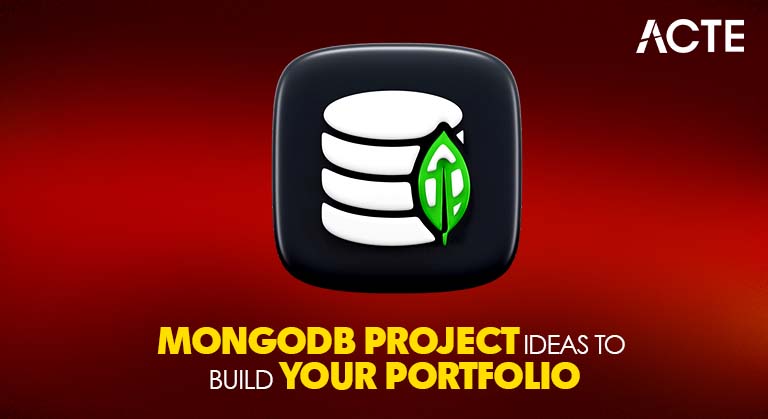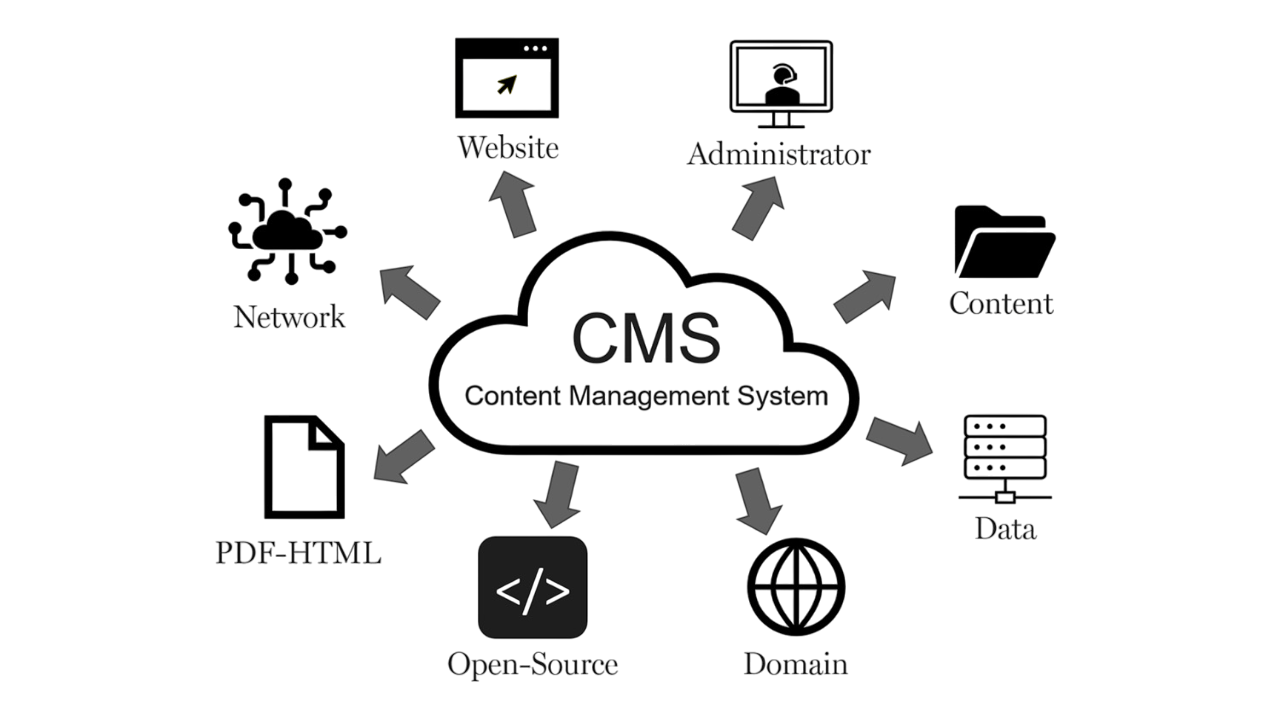
- Get Started With MongoDB
- Best MongoDB Projects for Beginners
- Develop a Football Statistics App
- Create a Project for Product Catalog Management
- Build a REST API with Node, Express, and MongoDB
- Developing a Content Management System
- Create a Project for LDAP Authorization
- Conclusion
Get Started With MongoDB
MongoDB Project is a powerful, open-source NoSQL database designed for storing and managing large volumes of unstructured or semi-structured data. Unlike traditional relational databases that use rows and columns, MongoDB stores data in flexible, JSON-like documents within collections. This schema-less structure allows for faster development and easy scalability, making MongoDB a popular choice for modern applications, especially those dealing with big data or real-time analytics. To get started, you can install MongoDB on your local machine or use a cloud-based solution like MongoDB Atlas, which provides a fully managed environment. After installation, you can interact with your database using the MongoDB Shell, GUI tools like MongoDB Compass, or programming language drivers such as those for Python, JavaScript (Node.js), or Java. Basic operations include creating databases, inserting documents, and querying Database Training using MongoDB’s expressive query language. One of MongoDB’s key strengths is its ability to scale horizontally using sharding and to handle large-scale data with high performance. It also supports indexing, aggregation pipelines, and replication for fault tolerance. Whether you’re building a small project or a large enterprise application, MongoDB offers a flexible and efficient solution for handling a wide range of data storage needs.
Do You Want to Learn More About Database? Get Info From Our Database Online Training Today!
Best MongoDB Projects for Beginners
- Student Management System: Create a system to add, update, delete, and view student records with details like name, age, class, and grades.
- Inventory Management System: Track products, quantities, prices, and suppliers using MongoDB collections Database in PostgreSQl and queries.
- Blog or Content Management System (CMS): Build a simple blog where users can create, read, update, and delete posts and comments.
- To-Do List Application: Store tasks, their status (completed or not), and due dates using MongoDB as the backend.
- User Authentication System: Implement signup, login, and user sessions with MongoDB storing user credentials and profiles.
- Recipe Book Application: Save recipes with ingredients, steps, cooking time, and tags. Allow searching by keyword or ingredient.
- Movie Database: Store movie titles, genres, ratings, release years, and allow users to search or filter by category.
- Bookstore App: Manage books, authors, prices, and stock levels. Add search and filtering features.
- Chat Application (Basic): Store messages, users, and chat room info in MongoDB for a simple real-time chat system.
- E-commerce Cart System: Design a basic shopping cart where users can add/remove items, and MongoDB tracks the cart start.
Develop a Football Statistics App
Creating a Football Statistics App is an exciting Projects for Beginners that combines sports enthusiasm with software development skills. This type of app allows users to track, analyze, and view football-related data such as player stats, team performance, match results, league standings, and more. To build such an app, you can use a tech stack like Node.js for the backend, MongoDB for data storage, and a frontend framework like React or Vue.js to deliver a user-friendly interface. Start by outlining your core features; these might include real-time match updates, Difference Between SQL and Python player profiles, goal statistics, and filtering options by league or season. You can use public APIs like API-Football or Football-Data.org to fetch live or historical data, or create your own database if you’re focusing on a local league or offline mode. The backend should handle API integration, data processing, and user authentication, while the frontend focuses on intuitive dashboards and interactive visualizations. For added functionality, consider implementing user accounts where fans can favorite teams, get notifications, or compare player stats. Whether you’re building the app as a personal project or for a broader audience, it offers a great opportunity to work with real-time data, responsive design, and modern web technologies.
Would You Like to Know More About Database? Sign Up For Our Database Online Training Now!
Create a Project for Product Catalog Management
A Product Catalog Management system is essential for businesses to organize, display, and manage their product offerings efficiently. This project involves building a platform where users can add, update, categorize, and search products with ease. To develop such a system, you can use technologies like Node.js and Express for the backend, MongoDB for flexible Database Training storage, and a frontend framework like React or Angular for a dynamic user interface. Begin by designing a database schema that includes collections for products, categories, and possibly brands or suppliers. Each product should store key details such as name, description, price, SKU, stock levels, and images. Implement CRUD (Create, Read, Update, Delete) operations to allow full management of products, alongside features like filtering by category, price range, or availability. Incorporating search functionality with indexing in MongoDB will enhance user experience by enabling fast and relevant product queries.

Additionally, consider user roles and authentication to restrict access to administrative functions. For scalability, optimize image storage using MongoDB’s GridFS or integrate with cloud storage services. This project not only serves as a practical tool for businesses but also provides hands-on experience in building robust, scalable web applications that handle real-world data complexities.
Build a REST API with Node, Express, and MongoDB
RESTful APIs shape the bottom for present day internet and cell programs, permitting purchaser programs and servers to alternate information and speak. In this mission, our number one attention could be on building a REST API making use of the extensively used JavaScript runtime surroundings Node.js, the internet utility framework Express, Graph databases and the MongoDB database.
To create a REST API, comply with those steps:
Creating internet and cell programs that speak with servers necessitates using RESTful APIs. Our mission involves building a REST API making use of Node.js, Express, and MongoDB. We intend to set up a steady and green API via means of incorporating CRUD (Create, Read, Update, Delete) operations, authentication, and information validation.
Let`s dive into the mission details:
- Step 1: Set Up the Project
- Step 2: Design the API Endpoints
- Step 3: Connect to MongoDB
- Step 4: Implement CRUD Operations
- Step 5: Implement Authentication and Authorization
- Step 6: Implement Data Validation
- Step 7: Error Handling
- Step 8: Test the API
- Step 9: Documentation
- Step 10: Deployment and Scalability
Deploy your API to a manufacturing surroundings, thinking about alternatives like Heroku, AWS, or Docker. Use MongoDB`s scaling competencies, which includes reproduction units or sharding, if necessary.
To Earn Your Database Certification, Gain Insights From Leading Blockchain Experts And Advance Your Career With ACTE’s Database Online Training Today!
Developing a Content Management System
A Content Management System (CMS) is a powerful tool that allows users to easily create, manage, and publish digital content.This project aims to guide you in building a CMS using MongoDB Project as the database backend for flexibility and scalability.
- Step 1: Define CMS Requirements – Identify features like user authentication, content creation/editing, categorization, and publishing workflow.
- Step 2: Design the Database Schema – Plan MongoDB collections such as users, content, and categories with their fields and relationships.
- Step 3: Implement User Management – Allow user registration, login, and role-based access control using secure password hashing.
- Step 4: Create Content Creation and Editing Functionality – Enable users to add/edit content with fields like title, Object-Oriented Databases body, author, and timestamps.
- Step 5: Enable Content Categorization and Tagging – Let users assign categories and tags to improve organization and search.
- Step 6: Implement the Content Publishing Workflow – Create draft, review, and publish stages with status fields stored in MongoDB.
- Step 7: Develop Content Retrieval – Use filters like category, tag, author, or status with indexed queries for efficient content fetching.
- Step 8: Enhance CMS Functionality – Add media management, content versioning, and search using GridFS and full-text search.
- Step 9: Test and Debug – Test all features thoroughly and fix any bugs to ensure smooth functionality and user experience.
- Step 10: Deployment and Scalability – Deploy securely and scale using MongoDB replication or sharding for higher traffic and data volume.

Create a Project for LDAP Authorization
LDAP is a broadly hired protocol applied for having access to be overseeing listing the statistics services. Within this undertaking, we will inspect the mixing of MongoDB with an LDAP server. This will set up a stable mechanism for person authentication and authorization inside your applications. Through the amalgamation of MongoDB and LDAP, you may assemble a resilient Nosql Databases Explained and stable authorization system. Let us delve into specifics associated with this undertaking.
- Step 1: Understand LDAP and MongoDB Integration
- Step 2: Set Up an LDAP Server
- Step 3: Design the Database Schema
- Step 4: Implement User Registration and LDAP Integration
- Step 5: LDAP Authentication
- Step 6: Manage Roles and Permissions
- Step 7: Secure Access to MongoDB
- Step 8: Test and Debug
- Step 9: Deploy and Scale
Preparing for a Database Job? Have a Look at Our Blog on Database Interview Questions and Answers To Ace Your Interview!
Conclusion
By leveraging the energy of MongoDB Project and exploring those pinnacle 10 undertaking ideas, you may raise your expertise and enjoy database management, internet development, and software program engineering. Embrace the possibilities presented via way of means of MongoDB, allow your creativity flow, and embark on thrilling MongoDB initiatives which can form your profession withinside the global of technology.Building a Content Management System (CMS) using MongoDB provides a powerful and flexible foundation for managing digital content. By following a structured development approach from defining requirements to deployment you can create a scalable and efficient CMS tailored to user needs. MongoDB’s schema flexibility, Database Training rich querying capabilities, and support for media and full-text search make it an ideal choice for dynamic content-driven applications. With proper testing, user management, and scalability strategies in place, your CMS can grow seamlessly alongside your content and user base, delivering a smooth and secure content experience.


